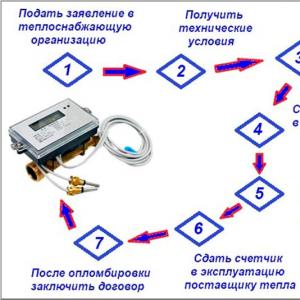Which buildings require lightning protection. Lightning protection of buildings and structures without explosive zones. What is lightning protection
Lightning is a concentrated electric current that is emitted by a thundercloud that forms when the air is humid and the temperature changes dramatically. Lightning can travel great distances. A direct hit of a lightning discharge into an object provides heating to ultra-high temperatures, followed by melting and even evaporation. Explosions can occur in structures due to a sharp increase in electrodynamic stress. There is also a subsequent negative effect of a lightning discharge: the magnetic field provoked by the strike generates an electromotive force on closed circuits of metal structures, which, in turn, can cause sparks and intense heat, disable electrical installations and cause electric shocks and other accidents to people. . To prevent negative consequences from lightning strikes, it is necessary to provide a lightning protection device.
What is lightning protection of buildings and structures
Briefly, this is a set of actions and measures, as well as various protective devices to prevent accidents and fires in residential and industrial buildings and structures when lightning strikes them.
Lightning protection measures are divided into external and internal. External protection consists of devices that intercept the electric charge from lightning and direct it to the ground through special current-carrying channels. Such structures, mounted in accordance with the mandatory technical rules for lightning protection, reliably protect buildings and people inside them from damage.
External measures for lightning protection of buildings and structures are divided into active and passive.
Passive protection is presented in the followingoptions:
- lightning protection mesh made of steel bars or wire rod, its use is allowed by all lightning protection standards, although at small excesses the mesh is not able to protect the roof surface reliably enough;

- metal rods (from one to several pieces) for receiving lightning discharges, a special cable connects them and grounding loops - lightning rods;
- lightning-receiving metal cables.
All external lightning protection devices have one standard and consist of three main parts: an electric discharge interceptor from a thundercloud - a lightning rod; a structural part that conducts electricity to ground electrodes, and a ground element that brings the lightning charge into the soil.
The internal set of measures for lightning protection is aimed at preventing the harm that electrical equipment can receive from a sudden voltage surge in the network as a result of a lightning strike. The execution of internal lightning protection is represented by two types: 1 - resistance to a direct lightning strike, 2 - resistance to an indirect strike that took place near buildings / structures.
With the secondary impact of a lightning discharge in the form of high potentials inside buildings, they are struggling with the help of a competent organization of grounding. Electromagnetic induction in long iron structures is removed by installing metal jumpers. The introduction of high electrical potentials through the inputs for communications is prevented by valve arresters and special spark breakers, which are triggered by a sudden voltage surge.

The problem is also solved by prohibiting the entry of overhead lines for certain categories of structures and replacing them with underground cable entries.
Operating principles of lightning rods
The operation of these devices is based on the fact that lightning always hits the highest and most prominent metal parts. All lightning rods have their own protection zone - this is a territory that is protected from a direct lightning strike. When a discharge approaches, the very first lightning strikes the highest point of a building or structure, and the protection diverts electrical energy into the soil, while the protected object itself is not affected. In the case when the size of the structure exceeds the size of the security zone of one lightning rod, additional devices of this type are installed (three to four interconnected rod devices with a common ground).
The reliability of the protective zones provided by lightning rods is divided into types according to GOST: "A" - the degree of reliability is close to one hundred percent (99.5) and "B" - the degree of protection is from 95 percent. The protective zone itself has a conical shape, its height and base area are determined by the dimensions of the building. The highest height of lightning rods allowed by building codes is 150 meters.
Arrangement of lightning rods
Any lightning rod consists of three main elements: a lightning receiver, conductive wires (usually made of copper or steel) and a pinching circuit that transfers the accumulated charge to the ground to a depth of one and a half to three meters. The simplest form of such a device is a metal mast. The support posts of lightning protection devices are, as a rule, made in the form of steel pipes of the same diameter, as well as columns made of wood or reinforced concrete. The current-carrying parts of lightning diverters are often attached to the structural elements of the structures themselves. Lightning traps on rod-type lightning rods are made of steel and must be at least 20 centimeters high.

Rope lightning rods are also called linear, they are a wire stretched between a pair of iron masts. Such a device allows you to collect all the lightning discharges that fall into the protection field. Linear lightning rods are connected to the ground loop with a large-diameter copper cable or simple metal fittings.

On high-rise buildings, a metal or reinforced concrete frame is often mounted as a down conductor.
Note! It is imperative to establish a reliable connection (provided by snip) for all frame elements. Balcony railings, stairs for emergency evacuation and other metal structural elements can also serve as down conductors. Conductors are attached to the wall surfaces of structures using plastic clips, you can also use a cable channel, which will help increase the service life of the lightning conductor. When planning construction, it is necessary to provide for the presence of ground loops with a step of 20-30 meters around the entire perimeter of the building.
Classification of objects to be protected
According to GOST standards, buildings and structures that need to be protected from lightning strikes are divided according to the degree of danger into ordinary and special objects. Ordinary objects are residential and administrative buildings for commercial, industrial and agricultural purposes, the height of which does not exceed 60 meters. The instructions for the installation of lightning protection of buildings and industrial facilities include the following special objects:
- potentially dangerous to surrounding people and buildings;
- hazardous to the environment;
- capable of causing radiation, biological or chemical contamination in the event of a lightning strike - emissions that exceed sanitary standards (as a rule, this applies to state-owned enterprises);
- structures with a height exceeding 60 meters, temporary buildings, playgrounds, objects under construction and others.
For such objects, the level of lightning protection is set at least 0.9. The owner of the structure or the customer of the construction site can independently set an increased reliability class for the building.
Ordinary construction objects, according to GOST, have four levels of reliability of protection against direct lightning strikes:
- the first (at a peak lightning current of 200 kiloamperes), reliability - 0.98;
- the second (lightning current 150 kiloamperes), reliability - 0.95;
- the third (current 100 kiloamperes), reliability - 0.9;
- the fourth (current 100 kiloamperes), reliability - 0.8.
Categories of lightning protection
Guiding documents (RD) distinguish three main categories of lightning protection, determined by the average number and duration of thunderstorms in a particular area, the location of the building and the probability of being struck by lightning, the presence of fire and explosion hazard zones in the building.
The first category of lightning protection rd includes industrial production facilities with B-2 and B-1 categories of explosion hazard. The second category of full lightning protection is assigned to buildings where there are V-2a, V-1a and V-1b explosion hazard classes, such areas occupy at least 30 percent of the premises. The same level of protection against lightning strikes is assigned to warehouses for fuel and lubricants, fertilizers, refrigerators with ammonia and flour mills. According to the RD, in industrial buildings with the 2nd category of lightning protection, it is necessary to ground all the cases of electric machines made of metal. When passing overhead lines to cable lines, it is necessary to install a jumper arrester on each phase.

Lightning protection of category 3 is installed on structures with 3 and 4 degrees of resistance to burning, as well as with an annual thunderstorm duration of at least 20 hours: children's institutions, schools, hospitals, entertainment centers, water towers, poultry farms and livestock complexes, as well as detached residential buildings with a height exceeding 30 meters.
Normative documents on lightning protection
Due to the importance of protecting buildings and structures from lightning, the state regulates the requirements for lightning protection by issuing regulatory documents:
- technical regulations;
- national standards - GOST (for example, GOST R IEC 62305-1-2010. Risk management. Lightning protection);
- instructions for departments and local guidelines - rd (for example, "Instruction on lightning protection of buildings and structures" rd 34.21.122-87);
- rules for the arrangement of electrical installations - pue (current version No. 7 is in force).
International ISO standards are also used.
Electric discharges accumulated in thunderclouds and brought to the surface of the earth by lightning can cause significant damage to buildings, structures, people and other objects located in them and nearby. To prevent negative consequences, lightning protection measures are applied, in the form of a system of various devices and special measures that minimize the possibility of electric shocks, accidents and fires.
Video
What is lightning, we know from the school desk. An electric discharge with a power of 100-200 thousand amperes destroys all objects where it hits. And most likely, tall buildings and trees attract lightning.
Lightning protection of a private house is relevant today more than ever. Our homes are literally stuffed with electronics, household appliances, mobile phones, which increases the risk of lightning exposure. Danger of lightning for private houses, not equipped with lightning rods is large - fire, destruction in the event of a direct hit by a discharge. The consequences of a discharge in the immediate vicinity of the building may be the failure of the power grid or a separate device - a TV, computer, etc.
- Internal, protecting against a discharge that did not fall directly into the house, but, for example, into a power line that feeds the internal wiring. In this case, an overvoltage occurs in the electrical network, the consequences of which can be deplorable. The internal protection is not visible, it is a small device - a limiter, a surge arrester, an SPD installed in the switchboard.
- External protection is a familiar lightning rod (as lightning protection is often incorrectly called) installed on the roof.
External protection of a private house from lightning
The system is either passive or active. The principle of operation of the first is simple, like everything ingenious. A metal lightning rod on the roof catches (attracts, intercepts) a lightning discharge and directs it through a current lead to the ground, to the grounding conductor.
Active lightning protection
Such lightning protection is more effective, it operates within a radius of 100 meters from the "cunning" lightning rod, which, by ionizing the surrounding air, intercepts the lightning discharge. Then it works like passive protection. The main advantage of the device is the "coverage" of lightning protection of neighboring residential buildings and outbuildings in a fairly large area.
Types of external lightning protection at home
According to the type of construction, modular-pin, cable and mesh lightning protection are distinguished.
pin
The pin system is called because of the lightning rod, which is installed in the highest part of the roof, and is a metal rod (pin). This design is suitable for lightning protection of a private house with a roof made of metal or any other material.
Rope
The installation of this type of protective device is allowed if the roof is slate, tiled, but not metal.
The lightning rod is a cable (thick wire, wire rod) stretched at a height of 0.3-0.5 m along the ridge of the house.
Mesh
The system is considered the most difficult in terms of installation. It is made from wire rod with a diameter of 6-8 mm, which, in the form of a grid with cells of 6x6 meters, is laid over the entire roof area. At the intersection of horizontal and vertical rods - welded. It is attached to the roof with brackets.
Mesh lightning protection of the house is installed, like cable, on a slate or tiled roof.

Down conductor
For this element of the system, round steel (copper, aluminum) with a diameter of at least 6 mm is used. The down conductor is fastened with brackets along the roof and walls. Usually, during installation, they try to lay the "route" away from window and door openings, as required by regulatory documents, and so as not to spoil the exterior of the building.
When laying the conductor, you need to follow some simple rules:
- On wooden surfaces, the conductor should be fixed at a distance of 15-20 cm from the wall;
- If a cable receiver of great length, a large mesh or pin consists of several elements, then there should be several down conductors (SO 153-34.21. 122-2003)
During the construction of a new building, the lightning protection of a cottage or house is already "laid" in the project documentation. But if a country house or country house has just been bought and there is no “lightning rod” on it, then the most reasonable solution would be to protect yourself and your loved ones from lightning discharges on your own or with the help of hired specialists.
If you have the skills to perform construction work, do-it-yourself lightning protection of a private house will not be a problematic issue, but it will save money.
Ground loop
The principle of the grounding device is extremely simple. Three steel pin-modules 1.5-2 meters long, 16-20 mm in diameter, zinc-coated, are driven into the ground and connected in series.
This design has a number of advantages:
- Possibility of installation at any depth without the use of special equipment;
- Small labor intensity. The work can be done by one person;
- Large immersion depth of the pin-electrode increases the efficiency of grounding;
- Connection of elements does not require welding (on special clamps);
- The whole system is hidden underground.
The contour is driven into the ground no closer than 1 m to the foundation of the house, and no closer than 5 m to the front door.

The principle of operation of the internal protection of the house against lightning
It is difficult to imagine life today without electronic and household electrical devices and appliances. All this equipment is connected to the mains, and cables from the computer and TV also go to the local network and satellite dish.
Data transmission lines through receivers, servers, distribution devices, power lines, are subject to lightning strikes, electromagnetic fields. Under certain circumstances, high voltage and high current move through the cables to a low potential, i.e. TV, refrigerator, computer. The result may be the failure of electrical appliances, fire, a threat to human life.
To protect yourself and your home, you need an internal lightning protection device for a private house or surge protection.
Such protection operates simply - it instantly equalizes the potentials between the conductors of the electric current. This task is performed by SPD - a special surge protection device.
Installation of this device is possible only after a reliable external protection device. To implement the lightning protection system of a private house, a project is being developed, which takes into account all the ways to enter the high voltage building.
After the installation of the SPD, non-current-carrying elements are connected to the ground bus, and lines that cannot be grounded are connected to the bus through the SPD.
For the selection of an SPD, there are rules that can be divided into groups depending on:
- Protected network indicators - current, voltage, frequency, wire section;
- Type of network - power supply, cable TV, telephone line, alarm system, etc.;
- Significance of the protected object - PC, TV or banking server.
Do you need lightning protection for a private house?
You can definitely answer - you need it! There is still a lot of unknown in the world, especially the mysteries of nature. If in a city a television tower or a high-rise building “protects” a lot of surrounding houses from lightning, then in a privately built area, as a rule, there are no such structures. But not far from the house there is a tall pine tree, which serves as a natural "lightning rod". But this is a theory, it’s still better and calmer to feel safe in “your own fortress”.
Do you need lightning protection?
Lightning, atmospheric discharges are a constant and almost ubiquitous companion of people. Their terrifying power was presented to our ancestors as a manifestation of the will of the gods. In world science and practice, effective methods of protection against the consequences of atmospheric discharges have been developed. Lightning protection is a set of measures to protect the life and health of a person and his property. At the moment, lightning protection, as a set of norms, methods and means, is a dynamically developing part of world technology.
Lightning and its striking factors.
Atmospheric discharges have a crushing force and their various consequences pose a serious threat to human life and property.
There are several lightning theories, but the main thing is that a potential difference of up to 1000 kV in the clouds with respect to the earth's surface causes a monstrous discharge of up to 200kA, which is accompanied by flashes and thunder. The heating of the atmospheric discharge channel reaches 30,000 deg. The average duration of the discharge, the most common cloud-to-ground lightning strike, is approximately 60-100 µs. It is more convenient to analyze the variety of damaging factors and consequences using the example of a table.
| Threat Manifestation | Affecting factors | Possible consequences |
|---|---|---|
| Direct lightning strike on a building | Discharge up to 200 kA, up to 1000 kV, 30 thousand o C | Damage to a person, destruction of parts of buildings, fires |
| Remote discharge during a lightning strike in communications (up to 5 km or more) | Introduced lightning potential through power supply wires and metal pipelines (possible overvoltage impulse - hundreds of kV) |
|
| Close (up to 0.5 km from the building) lightning strike | Induced lightning potential in the conductive parts of the building and electrical installation (possible overvoltage impulse - tens of kV) | Damage to a person, violation of electrical wiring insulation, fire, equipment failure, loss of databases, failures in the operation of automated systems |
| Switching and short circuits in low voltage networks | Overvoltage impulse (up to 4kV) | Failure of equipment, loss of databases, failures in the operation of automated systems |
From the above, we can conclude:
- lightning, lightning potential poses a real and diverse threat to human life and property.
- The human environment, as it becomes saturated with sensitive modern electronic equipment, has become extremely vulnerable to the effects of atmospheric and switching overvoltages.
As an example, the following statistics can be cited: over 25% of insurance payments in Germany account for damage from lightning and surges.
The need for lightning protection and surge protection is beyond doubt for everyone who has witnessed the consequences of atmospheric discharges.
A short list of problems related to the security of existing structures, the design and implementation of lightning protection of buildings in the territory of the Russian Federation.
At their core, the problems of Russian lightning protection are of a regulatory nature. The norms in force in the territory of the Russian Federation in the field of lightning protection do not fully reflect the achievements of modern science and technology. Effective methods and means of lightning protection are most fully presented in the IEC (International Electrotechnical Commission) standards and confirmed by wide practical application in industrialized countries.
For convenient perception of the text of the article, it is necessary to give the functional names of the basic sections of the lightning protection system adopted in international practice.
With a very generalized comparison of world and Russian standards, a number of fundamental conclusions can be drawn.
According to the section of external lightning protection:
- In contrast to the norms of the Russian Federation, the IEC standards have developed a detailed method of protection by applying lightning protection circuits (mesh) to complex roofs of buildings in combination with protection of protruding parts.
- The Russian guiding document "Instructions for the installation of lightning protection of buildings and structures" (RD 34.21.122-87) does not fix the world practice of using anti-corrosion materials and prefabricated elements, including ground electrodes and bolted connectors made of galvanized steel in grounding devices.
- The same instructions stipulate the unambiguous practice of receiving a lightning strike with a metal roofing. At the same time, in the IEC normative documents, this method is used only when there is no need to ensure the safety of this coating.
According to the section of internal lightning protection:
At the moment, the international concept of zonal surge protection for electrical installations of buildings, information and telecommunication systems, electronic equipment and terminal devices is practically outside the field of activity of Russian specialists.
- The IEC standards carefully developed rules and recommendations for the use of surge arresters in accordance with the zonal concept of internal lightning protection, as well as requirements for them. At the same time, the new edition of the PUE contains only a fragmentary indication of the need to install arresters on the input electrical cabinets during the air input of the supply line.
- The Russian standards have not developed a set of methods and means for protection against lightning and switching overvoltages of modern low-voltage networks, equipment and devices.
As a result, this is not an exhaustive list of the real problems faced by developers, contractors and property owners.
In the absence of practice of using prefabricated elements, it is possible to implement effective external lightning protection of cottages, estates and similar buildings only with the use of free-standing high rod lightning rods. As a rule, developers and owners are not satisfied with this decision, because. the architectural identity of the building is violated, and its implementation is associated with significant costs.
The use of a metal roofing (especially metal tiles) as a lightning rod can lead to deformation and destruction of the sheet material, as well as ignition of the underlying combustible materials of the roof structures.
Difficulties arise in the arrangement of external lightning protection on reconstructed industrial, public and administrative buildings. At such facilities, it is cheaper to perform external lightning protection and grounding, regardless of current-carrying building structures, than to determine their suitability and reconstruct. In conditions of practical unavailability of factory-ready elements on the market, it is difficult to effectively and economically implement lightning protection of these objects.
Parts of lightning protection and grounding devices made from improvised materials in construction conditions have, as a rule, a low durability, an insufficient degree of protection against a direct strike, and no means of protection against the brought and induced lightning potential.
Public and industrial buildings in urban areas that are protected from direct lightning strikes using conductive building structures, as a rule, are equipped with electrical installations without internal lightning protection devices. Owners and operating organizations may incur significant costs to eliminate the consequences and cover damage from lightning and switching overvoltages in networks.
Every year, expensive and sensitive to impulse voltage information technology equipment, telecommunications and automation systems are increasingly used in everyday life, management, industry and communications. Their uninterrupted operation and safety require complex and high-quality equipment to limit lightning and switching overvoltages with rules of application, installation and operation that are understandable to specialists.
Under these conditions, the subject of a possible reduction in the risks of insurance companies, and, accordingly, the size of tariffs for real estate and property insurers, is of great interest.
Experts offer you to create a new level of security for the houses you live in, which you build, equip and design. Complex equipment with system equipment of the leading German manufacturer OBO Bettermann is a time-tested effective solution for lightning and surge protection.
Lightning protection is a set of measures aimed at ensuring the safe operation of buildings, structures and utilities when exposed to lightning manifestations caused by a direct lightning strike and its secondary manifestations.
Remember:
Installing a lightning protection system ensures the safety of both the building and the people in this building.
Lightning protection of buildings and structures consists of: lightning rod (lightning rod) and down conductor (galvanized circle or strip).
The lightning rod receives the lightning discharge and transmits it through the down conductor to the grounding device.
The lightning protection system of a residential building differs from an industrial facility, not only in the scale of lightning protection, but also in its constituent elements.
| An opportunity to get acquainted with the current catalog of TerraZinc products. In the catalog you will find all the necessary elements of lightning protection and grounding with a brief description and important characteristics. |
| An opportunity to get acquainted with the current catalog of TerraZinc products, on the website page with a detailed description of all elements of lightning protection. All elements are clickable, which makes it possible to get acquainted with the detailed description and technical characteristics of the selected element. |
| An opportunity to get acquainted with the current catalog of TerraZinc products, on the website page with a detailed description of all elements of lightning protection. In the near future, work will be carried out on the village and a detailed description of each grounding element will appear. |
Building lightning protection
Consider lightning protection of buildings. Let's take as an example.

For mounting to the surface of the roof, facade, gutters and other structural elements of the building, lightning protection elements are used - clamps, clamps and.

A grounding conductor serves as a grounding device. You can implement grounding in various ways, more about grounding can be found in our article: grounding.
The result of a well-executed grounding is the performance of an action - the output of the received charge to the ground.
It's interesting to know that active lightning protection is nothing more than a myth. We will publish a detailed article on this soon. Keep for updates.
Lightning protection of industrial buildings (industrial lightning protection)
Consider lightning protection of an industrial building, or any other large building with a straight roof.

A significant difference is the presence of a straight roof, in this case, the method of locating the conductor is used (mainly a galvanized circle Ø8 mm is used.) in the form of a grid. This creates a kind of shielded barrier that prevents lightning from entering the roof of the building.
In this case, use or.

Holders are placed over the entire surface of the roof at a distance of 0.8 to 1.2 meters from each other.
The main requirement, in addition to the relative position of the holders (according to TKP 366-2011), is the exposure of the height. The conductor must not be closer than 110 mm. to the roof surface.
This requirement is fulfilled by the overall dimensions of the roof holder (code: 30000 or code: 30001) TerraZinc.
It is worth noting that this requirement (withstand a height of 110 mm.) Is prescribed only in the technical requirements of the Belarusian standards and in the requirements prescribed in the technical documentation of the countries of the former CIS. And yet, knowing the requirements, Polish and German manufacturers continue to produce holders of much lower height.
Under these conditions, when using such holders, when installing a galvanized conductor in a lightning protection system, it is necessary to use additional linings and extension cords, which greatly increases the cost of industrial lightning protection.
The Belarusian company "TerraZinc" offered a way out of this situation. The enterprise for the production of lightning protection and grounding systems, since April 2015, began the production of roof holders of its own production that meet all the requirements specified in the technical documentation.

Similar roof holders made in Poland:



All other elements of lightning protection: lightning protection masts; fasteners and clamps used for mounting the conductor to the facade of the building, etc., are similar to the lightning protection elements used for a residential building.
What effects does lightning have on unprotected objects?
Lightning is characterized by a direct strike - a powerful damaging factor that causes explosions, fires, death of people and animals, destruction (damage) of building structures and engineering equipment. With a direct strike, the magnitude of the lightning current can reach up to 200 kA, the voltage is 1000 kV, the temperature of the lightning channel is up to 30,000 0 C.
Secondary manifestations of lightning occur as a result of a direct or close (up to 1 km) lightning strike. Secondary manifestations are understood as the introduced electric potential along the wires of power supply systems and metal pipelines, accompanied by overvoltage impulses up to 100 kV, electromagnetic pickups that interfere with the operation of highly sensitive equipment. With secondary manifestations, human lightning current strikes, damage and ignition of electrical wiring insulation, failure of electrical equipment, loss of databases and malfunctions of automated systems occur.
lightning protection price
To determine the cost of a lightning protection system, we need information:
- building design;
- photos of the building from 4 sides;
- overall dimensions of the building (length, width, wall height to the beginning of the roof, slope length, ridge length);
- roofing material;
- the shape of the ridge (semicircular / angular);
- the presence of elements (dormer window, chimney, ventilation pipe, antenna, etc.) protruding above the roof (indicate the distance);
- material and size of pipes on the roof (diameter or along the perimeter, height);
- the presence of stormwater; location and diameter of drainpipes;
- facade material (main material of the wall; material and thickness of the insulation);
- the presence of snow retention, roof fencing and stairs for maintenance;
- soil type.
Use our service for .
It is necessary to refer to the accompanying documentation in order to answer what the price of lightning protection depends on, or rather, to TKR 366-2011:

For structures of the 1st level of lightning protection, the number of elements used in the lightning protection system will be greater and, accordingly, the price of lightning protection will be higher. And for buildings of the 4th level, the number of elements used is less and the price of lightning protection is correspondingly less.
At the same time, regardless of the level of lightning protection, a large-sized object requires a large amount of galvanized conductor (galvanized circle or galvanized strip).
And in the presence of a complex structure of the roof (broken roof, the presence of a large number of output pipes and receiving antennas and other protruding elements located above the roof), the number of lightning protection masts increases.
All these conditions will influence the formation of prices for lightning protection.
The price of lightning protection will depend on the number of necessary elements to ensure lightning protection and grounding of the facility.
Specialists of TerraZinc LLC in the shortest possible time and free of charge will carry out the calculation and compile a list of the necessary elements for your building. They will also explain why exactly these elements were chosen for lightning protection of your facility. And they will answer the question: lightning protection price.
If necessary, we will send it to a friendly design organization (at a good discount), where they will draw up a project and issue the necessary set of accompanying documentation, in accordance with the legislation of the Republic of Belarus.







